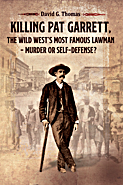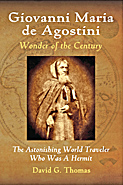|
|
||||||||||||||||||||||||
 |
||||||||||||||||||||||||
|
|
||||||||||||||||||||||||
|
||||||||||||||||||||||||
|
|
||||||||||||||||||||||||
 |
||||||||||||||||||||||||
 |
||||||||||||||||||||||||
 |
||||||||||||||||||||||||
|
|
||||||||||||||||||||||||
|
|
|
|
I Chose the TBM! |
|
By James F. "Frosty" Ballard, VT-4 |
||||||
|
Pre War I grew up during the Great Depression, just as everyone else did that was in WWII. The only circumstances that might be different from most of the others, I was one of 14 children and we were farmers in North Georgia. There was a ninth grade school within walking distance and our Dad told all of us that was as far as he could possibly send us to school. Thanks to President Roosevelt for creating the NYA (National Youth Administration), which made it possible for many people to finish high school. Then, I worked for 3 years in a manufacturing plant prior to joining the Navy. War Years After enlisting in the Navy in April, 1942, my boot days were spent in San Diego. While there, we were given several evaluation tests. During one of them, I was able to tell a dot from a dash and found myself in Radio School in Los Angeles. At the end of this school, my Navy career did a complete turn-around from the way it was heading. They were asking for volunteers for Aviation Radio School in Memphis, Tennessee. Never dreaming I would wind up sweating carrier landings, I volunteered. Radio School and Gunnery School in Hollywood, Florida was rather uneventful and the real tests began when I arrived in Jacksonville, Florida for Operational Flight Training. Our group was told we had a choice of flying in PEYs (Catalinas) or TBMs (Avengers). While on a tour of the base, we found ourselves down on the St. Johns's River, watching the PEYs take-off and land. At this point, my mind was definitely made up that the PEY would be my plane. Suddenly, one of the PEYs blew completely apart over the river. Guess which plane I chose then! After Jacksonville, it was on to Carrier Aircraft Service Unit 22 (CASU-22) in Quonset Point, Rhode Island. The first ship I went aboard was the first LST (Landing Ship Transport) to cross the North Atlantic. To make bad matters worse, it was December and very cold. The USS Ranger was a most welcome sight when I went aboard her in Scapa Flow. From that point on, I was a VT-4 member until we came back from the Pacific. Because I had a real messed-up stomach, the Navy sent me packing on June 1, 1945. I received a medical discharge and have been labeled a disabled veteran ever since. Post War After arriving home, I enrolled in an accounting school under the GI Bill. I went to work for the former Railway Express Agency in their accounting department. I spent 30 years with the Agency traveling and transferring my family around very extensively. After the company went out of business in 1975, I went to work with the Post Office and stayed there until I retired in 1982 (13 years). Gloria and I have 3 children, 4 grandchildren, and 1 great-grandchild. We live in Chattanooga, Tennessee. |
||||||
|
||||||
|
Air Group 4 - "Casablanca to Tokyo" |
|||
|
|
|||